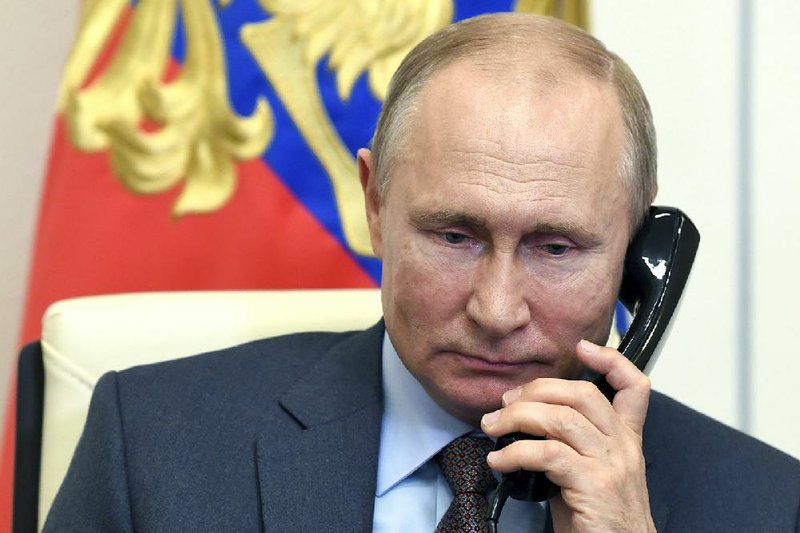MOSCOW -- Russian President Vladimir Putin on Tuesday endorsed his country's nuclear deterrence policy which allows him to use atomic weapons in response to a conventional strike targeting the nation's government and military infrastructure.
The new expanded wording reflects Russian concerns about the development of prospective weapons that gives Washington the capability to knock out key military assets and government facilities without resorting to atomic weapons.
In line with Russian military doctrine, the new document reaffirms that the country could use nuclear weapons in response to a nuclear attack or an aggression involving conventional weapons that "threatens the very existence of the state."
But the policy document now also offers a detailed description of situations that could trigger the use of nuclear weapons. They include the use of nuclear weapons or other weapons of mass destruction against Russia or its allies and an enemy attack with conventional weapons that threatens the country's existence.
In addition to that, the document now states that Russia could use its nuclear arsenals if it gets "reliable information" about the launch of ballistic missiles targeting its territory or its allies and also in the case of "enemy impact on critically important government or military facilities of the Russian Federation, the incapacitation of which could result in the failure of retaliatory action of nuclear forces."
The buildup of conventional forces near Russia's borders and the deployment of missile defense assets and space-based weapons are among the threats identified by Moscow in the new document.
U.S.-Russia relations are at post-Cold War lows over the Ukrainian crisis, the accusations of Russian meddling in the U.S. 2016 presidential election and other differences.
Amid the tensions, the Kremlin has repeatedly voiced concern about the deployment of U.S. and allied forces in the Baltics and NATO drills near Russia's borders.
Russian officials have cast the U.S.-led missile defense program and its plans to put weapons in orbit as a top threat, arguing that the new capability could tempt Washington to strike Russia with impunity in the hope of fending off a retaliatory strike.
In 2018, Putin revealed an array of new weapons that he said would render U.S. missile defense useless. They include the Avangard hypersonic vehicle capable of flying 27 times faster than the speed of sound and making sharp maneuvers on its way to target to dodge the enemy's missile shield. The first unit armed with the Avangard entered duty in December.
Another doomsday weapon that Putin has mentioned is the nuclear-armed and atomic-powered Poseidon underwater drone capable of causing a devastating tsunami near an enemy coast. Its tests are continuing.
Last year, both Moscow and Washington withdrew from the 1987 Intermediate-range Nuclear Forces Treaty. The only U.S.-Russia nuclear arms control agreement still standing is the New START treaty, which was signed in 2010 by former President Barack Obama and former Russian President Dmitry Medvedev. The pact limits each country to no more than 1,550 deployed nuclear warheads and 700 deployed missiles and bombers and envisages sweeping on-site inspections to verify compliance.
Russia has offered to extend the New START, which expires in February 2021, while the Trump administration has pushed for a new arms control pact that would also include China.
A Section on 06/03/2020

